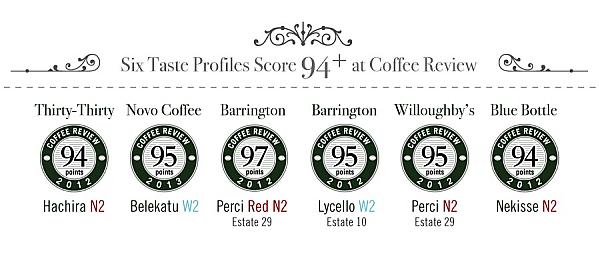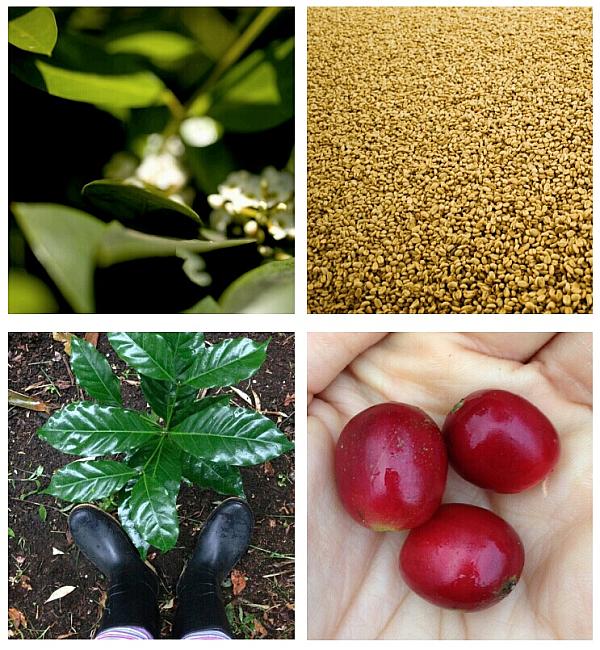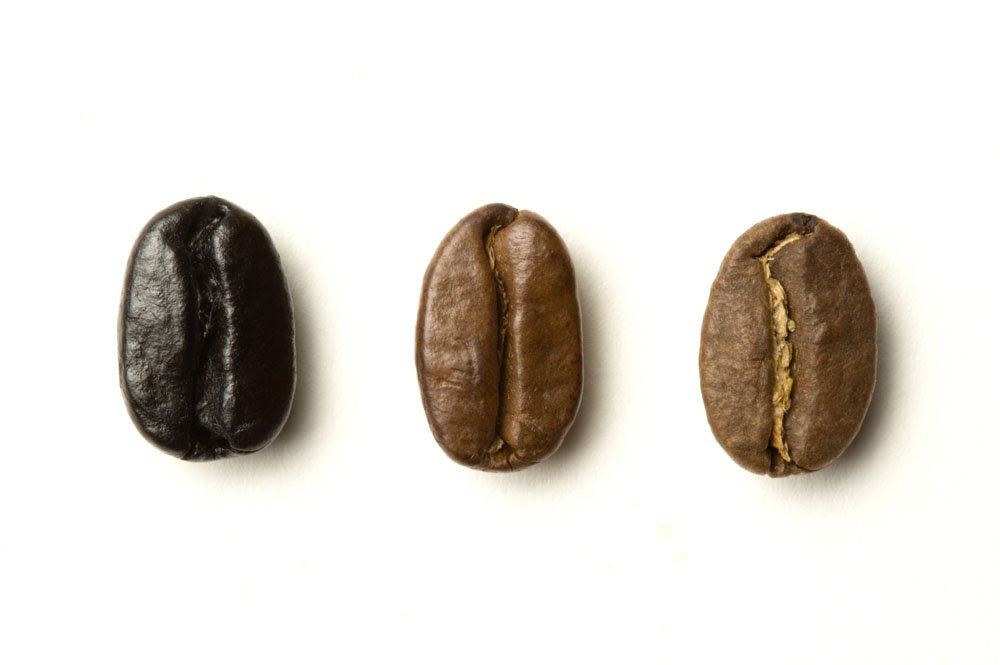World coffee knowledge explanation: 90+ coffee label represents the meaning---NinetyPlus Coffee
Ninety + Coffee comes from American boutique coffee creator and supplier: NinetyPlusCoffee. Only a few years after the company was founded in 2006, 90 has made coffee industry around the world aware of their names. Since 2007, the first coffee has been a precious choice for coffee industry experts and contestants. Today, the Ninety + 13 Coffee is one of the richest top coffee series in the world, with a much better taste and quality than any other expensive coffee.
Ninety + four brands include: coffee, Manor, sense, Solkiln. Represents their four important achievements.

Ethiopia, and its different flavors of many different varieties are no less than 10, 000 grapes into 1 million different wines. Ninety percent of the raw beans come from the original varieties of Ethiopia, including the Panamanian manor Gesha, which was also transplanted by Ethiopia. Processing is the specialty of 90 +. They separate these coffees according to variety, microclimate and fresh time, taste them one by one, and specially design processing methods for each taste to achieve a taste characteristic. Just like a big-name design, study hard and spend painstaking efforts to complete a handicraft that is close to art. Natural products go through a lot of refinement, improvement, and finally achieve the most beautiful posture to present the content to everyone.
Ninety +
NinetyPlus, translated directly means 90 +, or "more than 90 points". Friends outside the industry may not understand that a coffee bean of more than 90 points means it is close to perfect for coffee lovers. Whether we are talking about the cup score or the CoffeeReview evaluation score, it is a hard-won honor.

2007ArichaSelection7 90's first coffee scored Coffee Reviews 95 (NovoCoffeeRoasters).
2009ArichaMicroSelection14 won the third place in the coffee world of the American Fine Coffee Association (SCAA).
2009ArichaMicroSelection33, accompanied by four-time Canadian champion SammyPiccolo, became the runner-up coffee in the World barista Competition.
The Rose Summer of the Manor of Panama came out for the first time in 2012, and PerciRed scored an all-time high of 97 (BarringtonCoffeeRoastingCo.) for the CoffeeReview.
In addition, 90 + Coffee has appeared in the world barista competitions many times, and the contestants have won the first prize in various countries and the world class. The scores of 93 CoffeeReview, 94, 95, 96 and 97, respectively, were scored in many times. Due to the numerous achievements accumulated over the years, they are not listed here.
Ninety + Brand creation:
Ninety Coffee was founded by our creative team, and our initial idea was to create a better manor coffee.
Our team: we are committed to providing extraordinary coffee for the global professional boutique coffee market, because we will personally control every step of the process from planting to production. In this process, we continue to pursue the ultimate coffee flavor experience.
As growers: our early experience tells us that in order to make a significant and meaningful change in coffee flavor, we need to devote ourselves to the whole process of coffee production, which requires us to start with planting management. So we take the initiative to assume the responsibility of the landowner and enjoy the process of getting close to the coffee tree every day, so that we can know enough about coffee and come up with better ways to improve its flavor from the source.
As a producer: in the initial processing process, we use different processing methods to develop different flavors of coffee. This forces us to force ourselves to engage in experiments that are repeated and sometimes lead to physical discomfort. In the course of the experiment, we trust our intuition, accept the failure calmly, and of course look forward to the success of the experiment. It is this repeated experiment that makes our coffee unique. In addition, we also have a work habit that every time we succeed in experimenting with a taste, we naturally ask ourselves, "what's the next taste?"
Honor: honor is not the most important thing for us, of course, thank people from all walks of life for their recognition of us, but for ourselves, there is nothing like to introduce our unique coffee flavor spectrum, in the process, they will feel much more complicated.
Into a wonderful coffee flavor.
Processing technology
The names of W2, H2, N2, Red, Ruby, Solkiln are all patented terms of 90 +. They represent different processing technologies.

W2,H2,N2
Ninety + thinks that coffee itself is a kind of fruit, so it has its own exclusive treatment method according to its taste: (W2), (H2), (N2). The distinction between these three flavors can also be simply understood as treatment methods: W2=WASH washing treatment and H2=HONEY honey treatment.
N2=NATURAL sun treatment. They actually represent the effect of fruit flavor on the taste in the process of treatment.
When you understand the traditional coffee treatment, you will find that after a small amount of adjustment in practice, the difference between these treatments will gradually blur. For example, a little water washing can be added at different stages of the dense treatment process to make it have a light and bright washing taste; the sun is strict.
Controlling the degree of pulp fermentation will also be brighter. Therefore, sun exposure and densification may not be as expected. In order to give the baker the clearest taste hint, ninety takes taste as the main category:
W2: lower (Low) fruit tonality; emphasizes brightness, acidity, and floral aroma.
H2: warm (Moderate) fruit tonality; emphasizes sweetness, fruit taste (rather than fruit flavor), and tea taste.
N2: higher (High) fruit tonality; emphasizes unrestrained, sweet and sour, jam and dried fruit flavors.
Red
The so-called "red treatment" is a special treatment carried out by the 90 team through their own patented drying technology, which makes the color of shelled coffee beans show varying degrees of red, from light red to ruby red. This treatment will once again enhance the aromatic characteristics of the coffee itself, and will reflect a strong sweet taste with obvious fruit flavor.
Ruby
The so-called "ruby" treatment is also a more difficult and extreme way of dealing with red. So that the red treatment of sweetness and fruit to the extreme, accidentally more than it will become a bad fermented flavor, the field. This method also requires a lot of manual screening. Every raw bean must reach the standard of "ruby" in order to be called a "ruby" bean. It has been eliminated many times, tried many times, and only the last point can reach the standard of "ruby", so it is expensive.
Solkiln
The so-called Solkiln method is a special treatment of 90 companies' patented technology, in which the fresh coffee fruit is dried in a house originally used to dry wood, in which special equipment is used to control the temperature and humidity needed to maintain the stability of the internal environment, while eliminating the impact of the local humid climate on the coffee.
Level
"Level" is the number after the ninety + product name marked "L". For example: L12-is Level12. Level is probably proportional to the price, representing 90 + special-purpose raw bean grading model: according to quality, quantity, production cost, 90 based on the original excellent raw beans, continue to grade as follows:
Level 7 (L7)
Harvest in a single production area. The rare varieties with meticulous taste and special flavor are selected by hand and then treated by NinetyPlus's unique method to reach the standard of more than 90.
Level 12 (L12)
Harvest in a single production area. Negative adjectives such as "must be recognized and indelible" are used on the website to indicate that this grade of beans must be a good taste that every coffee maker will never forget.
Level 21 (L21), Level 39 (L39)
Most of these are Gesha varieties planted on Panamanian estates in 1990. Processed by special Red
Ethiopian NekisseRed also belongs to Level39 (L39).
Level 95 (L95), Level 195 (195)
They are all beans in the advanced microenvironment of the Panamanian manor, processed by patented drying technology after a long screening process. Reach the top taste standard in the design. Most of them will be processed under the personal care of the sponsor Joseph. The annual output may only reach about ten to dozens of kilograms. It's a collection. This is not enough, and he is actively buying a 135-hectare coffee plantation in Panama, planting 80, 000 GESHA (Geisha) trees, which have been regarded as the best coffee variety in recent years.
Important Notice :
前街咖啡 FrontStreet Coffee has moved to new addredd:
FrontStreet Coffee Address: 315,Donghua East Road,GuangZhou
Tel:020 38364473
- Prev

Three minutes to learn about coffee beans
When buying coffee beans, there are generally three choices: raw beans, cooked beans, coffee powder. Raw beans: beans that are not roasted, can be stored for a long time, have almost no coffee taste, and need to be roasted in a special roaster to stimulate taste. If you bake yourself, not only do you have to buy a baking machine, but the technical requirements for bakers are also very high. Beginners are advised to buy carefully.
- Next

DIY at home: a simple way to make coffee
Coffee, slowly sip, mellow and elegant, refreshing, only feel comfortable limbs, bitter with fragrance, fragrant with sweet, really feel a cup of coffee, feel a kind of elegant culture, just like the classic picture in Titanic, Rose gently tapped the small spoon along the edge of the white coffee cup twice to make mocha coffee: add chocolate to the cup.
Related
- Beginners will see the "Coffee pull flower" guide!
- What is the difference between ice blog purified milk and ordinary milk coffee?
- Why is the Philippines the largest producer of crops in Liberia?
- For coffee extraction, should the fine powder be retained?
- How does extracted espresso fill pressed powder? How much strength does it take to press the powder?
- How to make jasmine cold extract coffee? Is the jasmine + latte good?
- Will this little toy really make the coffee taste better? How does Lily Drip affect coffee extraction?
- Will the action of slapping the filter cup also affect coffee extraction?
- What's the difference between powder-to-water ratio and powder-to-liquid ratio?
- What is the Ethiopian local species? What does it have to do with Heirloom native species?

